We put the Apple iPhone 15 through our rigorous DXOMARK Camera test suite to measure its performance in photo, video, and zoom quality from an end-user perspective. This article breaks down how the device fared in a variety of tests and several common use cases and is intended to highlight the most important results of our testing with an extract of the captured data.
Please note that all iPhone 15 sample images in this review have been converted to JPG format. Image quality was analyzed using the original HEIC files. For both photo and video, the best visualization pipeline for an optimal HDR experience is described in the article.
Overview
Key camera specifications:
- Primary: 48MP sensor, 26mm equivalent f/1.6-aperture lens, Dual Pixel PDAF, sensor-shift OIS
- Ultra-wide: 12MP sensor, 13mm equivalent f/2.4-aperture lens
- A16 Bionic Chipset
Scoring
Sub-scores and attributes included in the calculations of the global score.
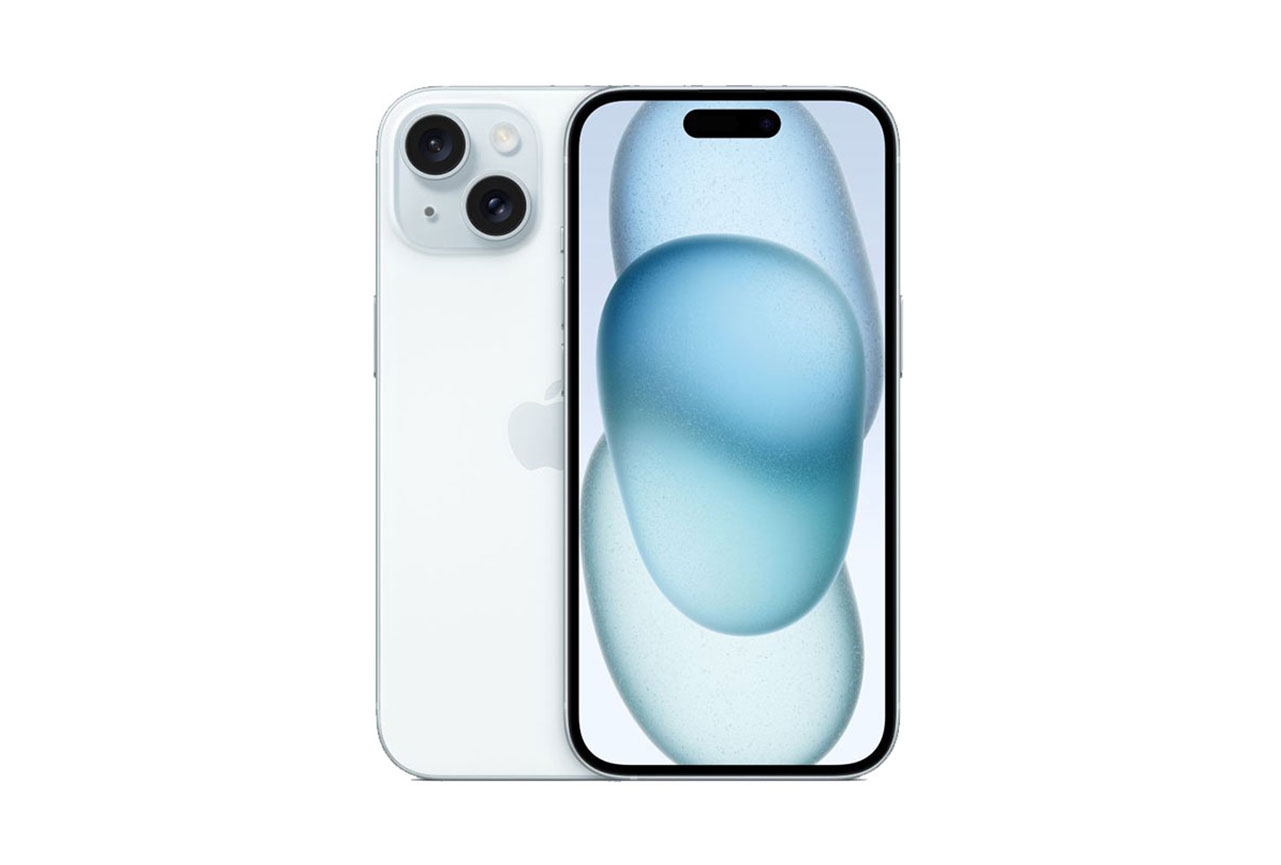
Apple iPhone 15


Use cases & Conditions
Use case scores indicate the product performance in specific situations. They are not included in the overall score calculations.
Outdoor
Photos & videos shot in bright light conditions (≥1000 lux)
Indoor
Photos & videos shot in good lighting conditions (≥100lux)
Lowlight
Photos & videos shot in low lighting conditions (<100 lux)
Friends & Family
Portrait and group photo & videos
Pros
- Vivid brightness and contrast when photos and videos are viewed on HDR display
- Pleasant and natural color rendering and skin tones, especially in bright light, for photos and videos
- Accurate depth estimation and effective fine detail segmentation in portrait mode
- Low noise levels in video mode
- Effective video stabilization
- Smooth zooming in preview
Just like its sister models iPhone 15 Pro and 15 Pro Max, the iPhone 15 proved to be an extremely reliable camera in our testing, producing bright and vivid images when viewed on HDR screens. It particularly excelled in terms of exposure and color, in both photo and video modes. This is the first time Apple has used a Quad-Bayer image sensor in non-Pro iPhone models and, like on last year’s iPhone 14 Pro and Pro Max models, on the iPhone 15 it helped enhance image quality and allowed for seamless 2x tele zooming. This resulted in a significant increase of the zoom score. The camera still lagged behind the Pro models in terms of zoom performance, though, due to the lack of a dedicated tele module and a smaller maximum aperture on the ultra-wide module.
Test summary
About DXOMARK Camera tests: DXOMARK’s Camera evaluations take place in laboratories and in real-world situations using a wide variety of subjects. The scores rely on objective tests for which the results are calculated directly by measurement software on our laboratory setups, and on perceptual tests in which a sophisticated set of metrics allow a panel of image experts to compare aspects of image quality that require human judgment. Testing a smartphone involves a team of engineers and technicians for about a week. Photo, Zoom, and Video quality are scored separately and then combined into an Overall score for comparison among the cameras in different devices. For more information about the DXOMARK Camera protocol, click here. More details on smartphone camera scores are available here. The following section gathers key elements of DXOMARK’s exhaustive tests and analyses. Full performance evaluations are available upon request. Please contact us on how to receive a full report.
Photo
Apple iPhone 15
169
For scoring and analysis, DXOMARK engineers capture and evaluate more than 2,600 test images both in controlled lab environments and in outdoor, indoor and low-light natural scenes, using the camera’s default settings. The photo protocol is designed to take into account the main use cases and is based on typical shooting scenarios, such as portraits, family, and landscape photography. The evaluation is performed by visually inspecting images against a reference of natural scenes, and by running objective measurements on images of charts captured in the lab under different lighting conditions from 1 to 1,000+ lux and color temperatures from 2,300K to 6,500K.
At this year’s keynote event, Apple put particular emphasis on portrait photography and a new feature called smart HDR, which appears to be a combination of an improved HDR algorithm at the capture level, and a new file format that allows for specific image rendering on HDR displays. We evaluated the iPhone’s HEIC files with embedded HDR data using Photo App on macOS Sonoma and an XDR Display.
Other important updates include the jump from 12MP to 24MP image size by default in most light conditions. In our tests, this resulted in a significantly improved texture/noise trade-off when compared to the previous iPhone generation. Overall, in terms of still image quality, the iPhone 15 has made an important step forward, outperforming its predecessors in almost every photo test attribute.
The combination of Apple’s HEIC image files with embedded HDR data produced amazing results when viewed on a dedicated display. Image results were striking in Photo App on macOS Sonoma on an XDR Display and the photo app on the iPhone 15 display alike, with brighter and more vivid rendering than ever. However, users of displays, devices or apps that do not support Apple’s photo HDR format will only see JPG images without the HDR effect.

Exposure
Apple iPhone 15
130

Color
Apple iPhone 15
130
Exposure and color are the key attributes for technically good pictures. For exposure, the main attribute evaluated is the brightness of the main subject through various use cases such as landscape, portrait, or still life. Other factors evaluated are the contrast and the dynamic range, eg. the ability to render visible details in both bright and dark areas of the image. Repeatability is also important because it demonstrates the camera's ability to provide the same rendering when shooting several images of the same scene.
For color, the image quality attributes analyzed are skin-tone rendering, white balance, color shading, and repeatability. For color and skin tone rendering, we penalize unnatural colors but we respect a manufacturer's choice of color signature.

Autofocus
Apple iPhone 15
125
Autofocus tests concentrate on focus accuracy, focus repeatability, shooting time delay, and depth of field. Shooting delay is the difference between the time the user presses the capture button and the time the image is actually taken. It includes focusing speed and the capability of the device to capture images at the right time, what is called 'zero shutter lag' capability. Even if a shallow depth of field can be pleasant for a single subject portrait or close-up shot, it can also be a problem in some specific conditions such as group portraits; Both situations are tested. Focus accuracy is also evaluated in all the real-life images taken, from infinity to close-up objects and in low light to outdoor conditions.

Texture
Apple iPhone 15
125
Texture tests analyze the level of details and the texture of subjects in the images taken in the lab as well as in real-life scenarios. For natural shots, particular attention is paid to the level of details in the bright and dark areas of the image. Objective measurements are performed on chart images taken in various lighting conditions from 1 to 1000 lux and different kinds of dynamic range conditions. The charts used are the proprietary DXOMARK chart (DMC) and the Dead Leaves chart.

Noise
Apple iPhone 15
117
Noise tests analyze various attributes of noise such as intensity, chromaticity, grain, structure on real-life images as well as images of charts taken in the lab. For natural images, particular attention is paid to the noise on faces, landscapes, but also on dark areas and high dynamic range conditions. Noise on moving objects is also evaluated on natural images. Objective measurements are performed on images of charts taken in various conditions from 1 to 1000 lux and different kinds of dynamic range conditions. The chart used is the Dead Leaves chart and the standardized measurement such as Visual Noise derived from ISO 15739.

Artifacts
Apple iPhone 15
82
The artifacts evaluation looks at lens shading, chromatic aberrations, geometrical distortion, edges ringing, halos, ghosting, quantization, unexpected color hue shifts, among others type of possible unnatural effects on photos. The more severe and the more frequent the artifact, the higher the point deduction on the score. The main artifacts observed and corresponding point loss are listed below.
Bokeh
Apple iPhone 15
85
Bokeh is tested in one dedicated mode, usually portrait or aperture mode, and analyzed by visually inspecting all the images captured in the lab and in natural conditions. The goal is to reproduce portrait photography comparable to one taken with a DLSR and a wide aperture. The main image quality attributes paid attention to are depth estimation, artifacts, blur gradient, and the shape of the bokeh blur spotlights. Portrait image quality attributes (exposure, color, texture) are also taken into account.
Preview
Apple iPhone 15
93
Preview tests analyze the image quality of the camera app's preview of the image, with particular attention paid to the difference between the capture and the preview, especially regarding dynamic range and the application of the bokeh effect. Also evaluated is the smoothness of the exposure, color and focus adaptation when zooming from the minimal to the maximal zoom factor available. The preview frame rate is measured using the LED Universal Timer.
Zoom
Apple iPhone 15
169
DXOMARK engineers capture and evaluate over 400 test images in controlled lab environments and in outdoor, indoor, and low-light natural scenes, using the camera’s default settings and pinch zoom at various zoom factors from ultra wide to very long-range zoom. The evaluation is performed by visually inspecting the images against a reference of natural scenes, and by running objective measurements of chart mages captured in the lab under different conditions from 20 to 1000 lux and color temperatures from 2300K to 6500K.
The Apple iPhone 15 comes with an ultra-wide camera module, but not a dedicated tele camera. Instead the 48MP Quad bayer primary camera provides optical zoom-alike capabilities up to a 2x tele zoom factor (equivalent to a 52mm lens). Using digital methods a tele zoom factor up to 10x is achieved.

Wide
Apple iPhone 15
122
These tests analyze the performance of the ultra-wide camera at several focal lengths from 12 mm to 20 mm. All image quality attributes are evaluated, with particular attention paid to such artifacts as chromatic aberrations, lens softness, and distortion. Pictures below are an extract of tested scenes.

Tele
Apple iPhone 15
128
All image quality attributes are evaluated at focal lengths from approximately 40 mm to 300 mm, with particular attention paid to texture and detail. The score is derived from a number of objective measurements in the lab and perceptual analysis of real-life images.
Video
Apple iPhone 15
159
DXOMARK engineers capture and evaluate more than 2.5 hours of video in controlled lab environments and in natural low-light, indoor and outdoor scenes, using the camera’s default settings. The evaluation consists of visually inspecting natural videos taken in various conditions and running objective measurements on videos of charts recorded in the lab under different conditions from 1 to 1000+ lux and color temperatures from 2,300K to 6,500K.
Just like for the iPhone 15 and other HDR video enabled devices that we have tested previously, a compatible HDR display is required to see the full potential of the HDR rendering. Please note that YouTube only displays the original HDR rendering if videos are watched on a compatible HDR screen. Otherwise, a compressed SDR video is displayed.
We tested the Apple iPhone 15 video mode at 4K resolution, a variable frame rate of 60fps, and Dolby Vision activated for embedded HDR data. This configuration yielded exceptional video results, surpassing the performance of Apple’s previous flagship models. Video exposure and color rendering remained remarkably consistent across a range of recording conditions, and noise levels were better managed compared to previous device generations. The autofocus performance was excellent, even in low light, and video stabilization was among the best currently available in the market.

Exposure
Apple iPhone 15
116
The iPhone 15 shares the top score for video exposure with the iPhone 15 Pro, thanks to the superbly managed HDR format, which provided a very wide dynamic range, exceptionally stable exposure, and smooth exposure transitions, even in low light scenes.

Color
Apple iPhone 15
120
The iPhone 15 outperformed most of its competitors in terms of color. White balance had a tendency to produce slightly warm results indoors and in low light, but skin tones were rendered accurately, and overall color rendering was quite pleasing. Our testers also observed some white balance fluctuations, but they were very infrequent.
Exposure tests evaluate the brightness of the main subject and the dynamic range, eg. the ability to render visible details in both bright and dark areas of the image. Stability and temporal adaption of the exposure are also analyzed.
Image-quality color analysis looks at color rendering, skin-tone rendering, white balance, color shading, stability of the white balance and its adaption when light is changing.

Texture
Apple iPhone 15
118
Due to the iPhone 15 being tested at a higher than usual frame rate (60fps), texture results were slightly lower than the competitors. A slight loss of detail was sometimes noticeable, especially when recording indoors or in low light.
Texture tests analyze the level of details and texture of the real-life videos as well as the videos of charts recorded in the lab. Natural videos recordings are visually evaluated, with particular attention paid to the level of details in the bright and areas as well as in the dark. Objective measurements are performed of images of charts taken in various conditions from 1 to 1000 lux. The charts used are the DXOMARK chart (DMC) and Dead Leaves chart.

Noise
Apple iPhone 15
120
Video noise has been improved over the Apple 14 series, with significant improvements in dimmer light conditions. Well-controlled video noise with an HDR video format is one of the biggest strengths of the iPhone 15 video mode.
Noise tests analyze various attributes of noise such as intensity, chromaticity, grain, structure, temporal aspects on real-life video recording as well as videos of charts taken in the lab. Natural videos are visually evaluated, with particular attention paid to the noise in the dark areas and high dynamic range conditions. Objective measurements are performed on the videos of charts recorded in various conditions from 1 to 1000 lux. The chart used is the DXOMARK visual noise chart.

Stabilization
Apple iPhone 15
119
In terms of video stabilization, our testers found the iPhone 15 to be on par with most current flagship devices equipped with a stabilized main camera module. Camera shake was counteracted effectively but still slightly noticeable. Frame sharpness was more consistent than on the iPhone 14 Pro.
Stabilization evaluation tests the ability of the device to stabilize footage thanks to software or hardware technologies such as OIS, EIS, or any others means. The evaluation looks at residual motion, smoothness, jellow artifacts and residual motion blur on walk and run use cases in various lighting conditions. The video below is an extract from one of the tested scenes.

Artifacts
Apple iPhone 15
86
Artifacts are evaluated with MTF and ringing measurements on the SFR chart in the lab as well as frame-rate measurements using the LED Universal Timer. Natural videos are visually evaluated by paying particular attention to artifacts such as aliasing, quantization, blocking, and hue shift, among others. The more severe and the more frequent the artifact, the higher the point deduction from the score. The main artifacts and corresponding point loss are listed below.
The iPhone 15’s high 60fps frame rate helped minimize unwanted artifacts, particularly the judder effect that tends to affect panning shots. Typical minor artifacts, such as aliasing, flare, and moving texture in low light conditions could occasionally be observed, though. While these artifacts had a very limited impact on the overall video quality, flare effects could be more of a challenge for videographers.


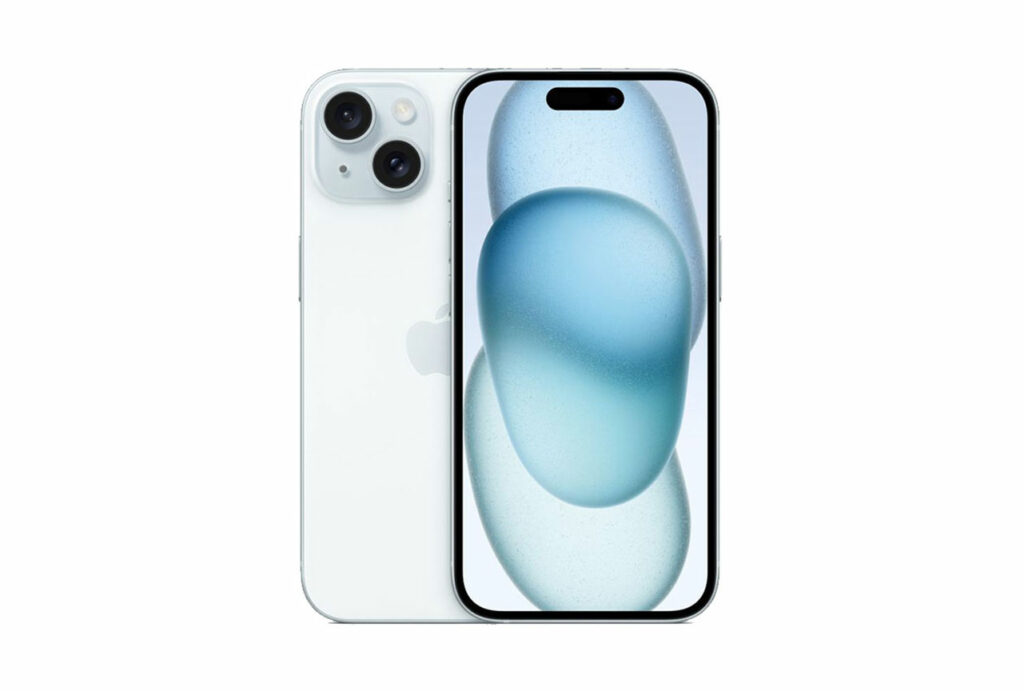


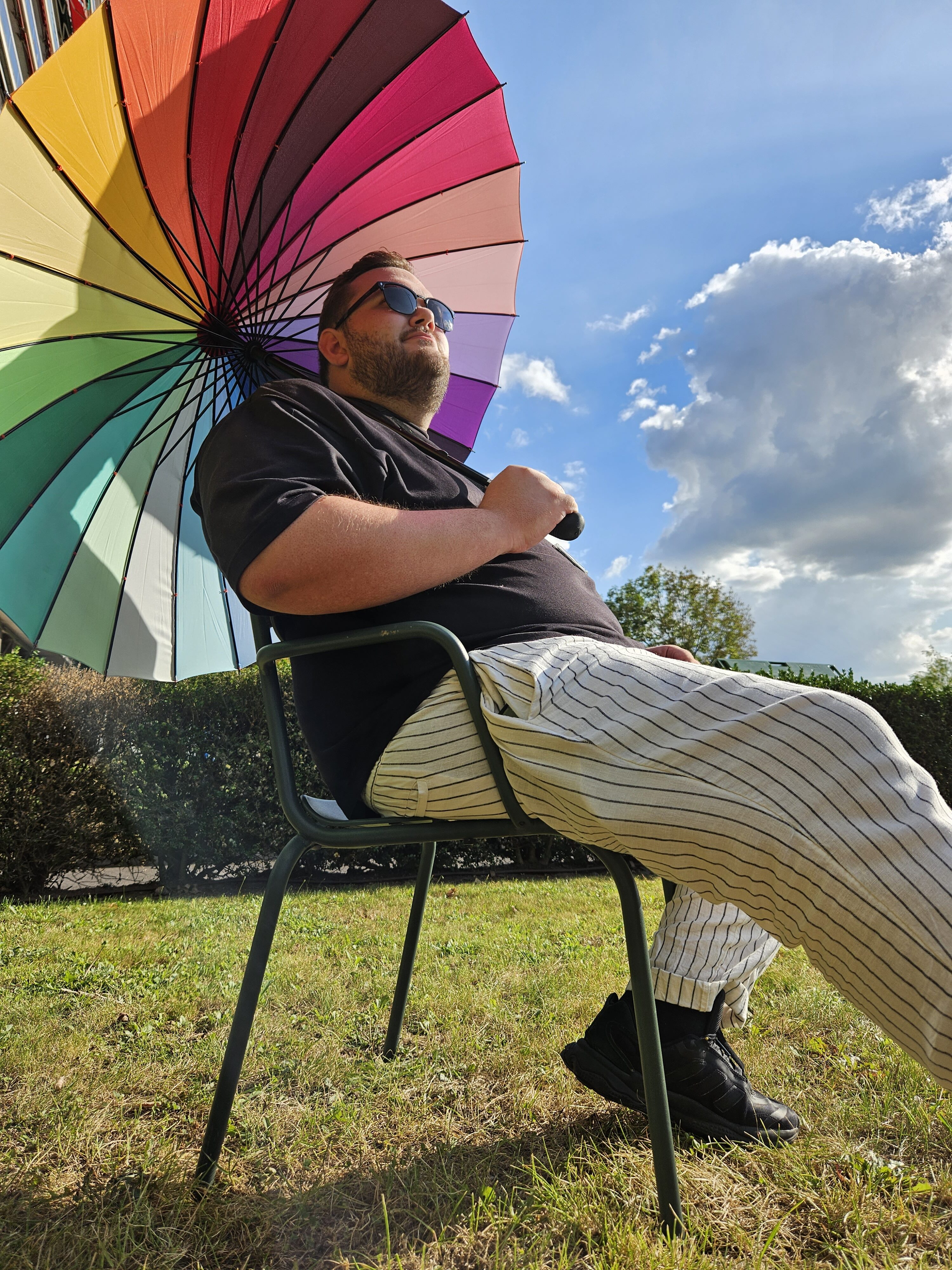

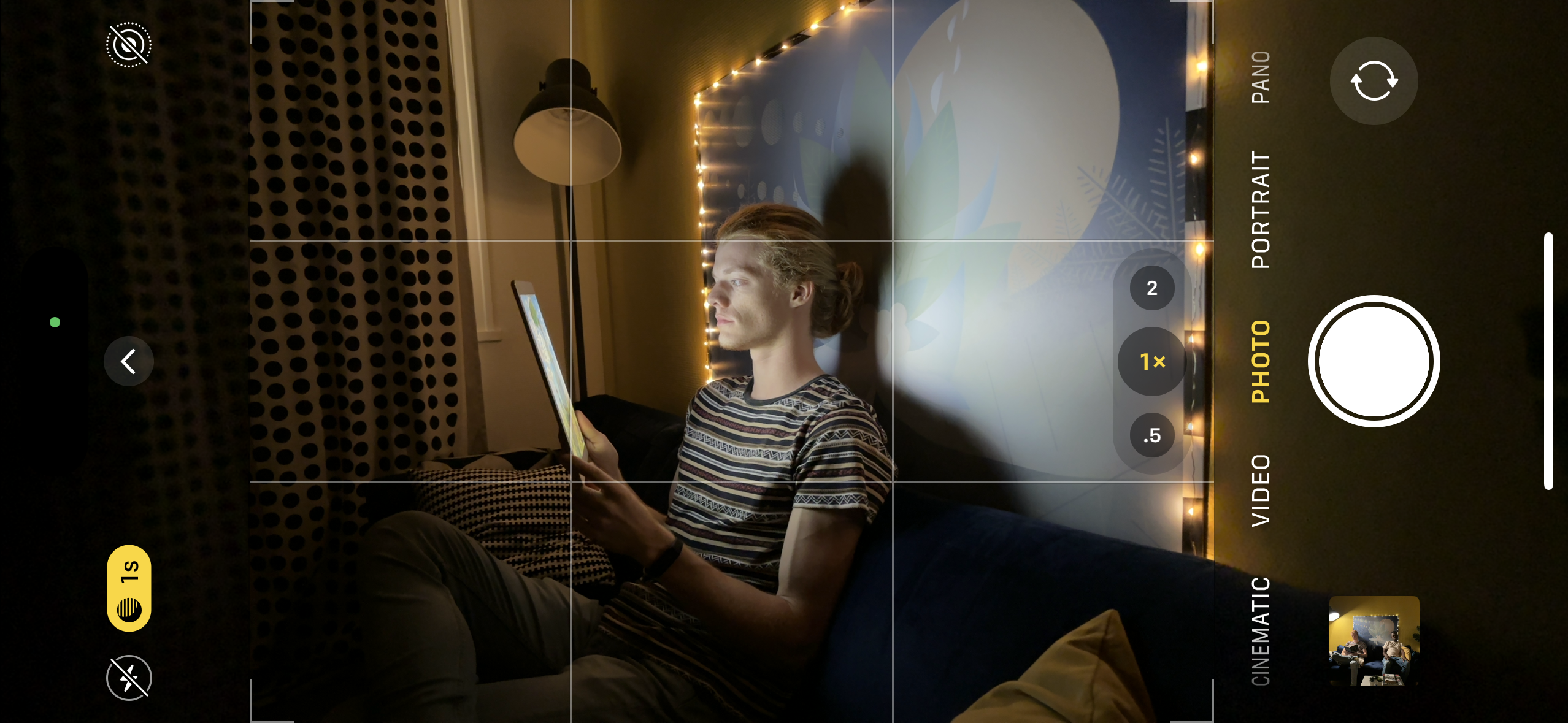
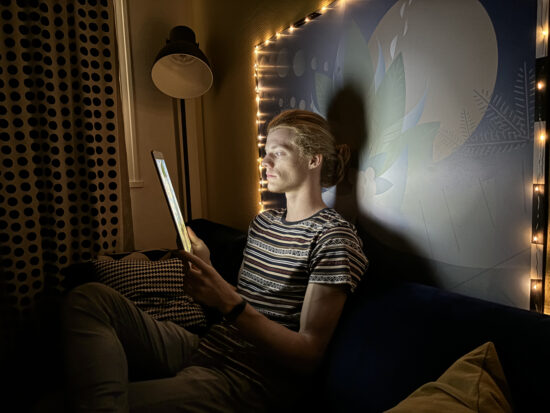


DXOMARK encourages its readers to share comments on the articles. To read or post comments, Disqus cookies are required. Change your Cookies Preferences and read more about our Comment Policy.